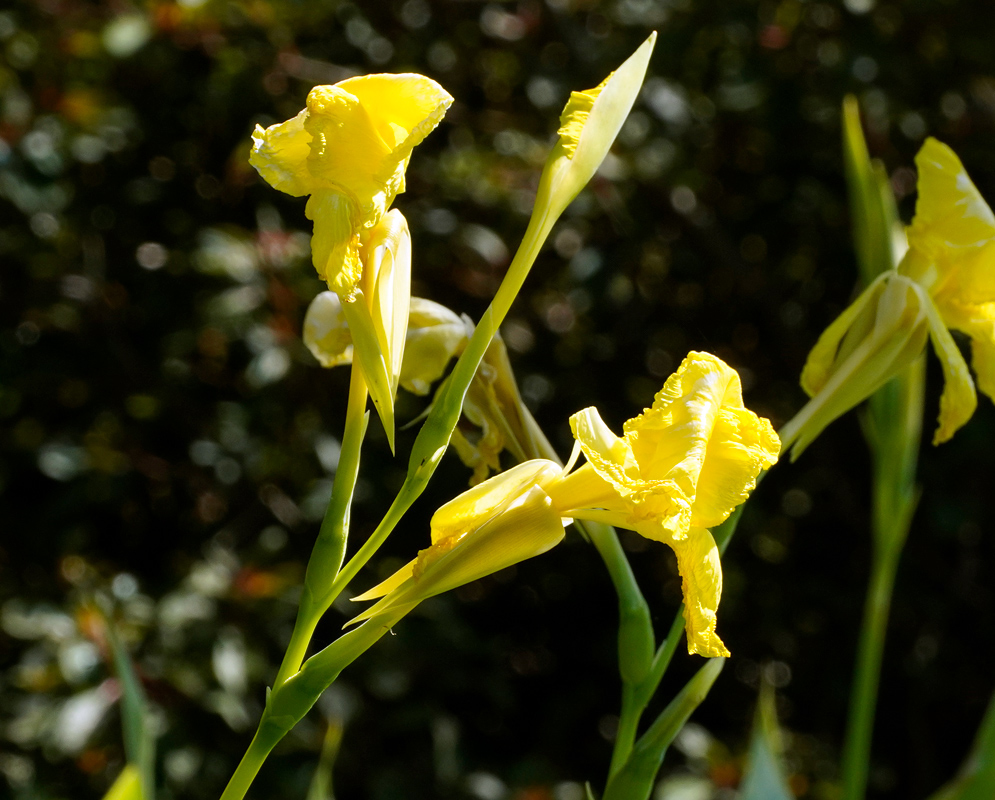This post has 11 Simple Fields-fields attached. Show fields.

Canna flaccida, commonly called golden canna, is native to the southeastern United States, occurring naturally in wetlands, marshes, pond margins, and slow-moving waterways from North Carolina to Florida and west to Texas. It is an aquatic or semi-aquatic perennial that can grow 3–6 ft tall, spreading by rhizomes in moist to saturated soils. The flowers are bright yellow, with delicate, crinkled petals that are actually staminodes, surrounding a reduced true petal structure. Each bloom is typically 3–4 in across, borne on tall stalks above the foliage, and produced over a long flowering season in frost-free regions. The broad, lance-shaped leaves are light to medium green and may reach several feet in length, contributing to the plant’s lush appearance. Canna flaccida is notable as one of the parents used in breeding modern hybrid cannas for improved color range and hardiness. It is easily propagated by division of rhizomes and thrives in shallow water or consistently moist garden soil. Photographed in Florida.

